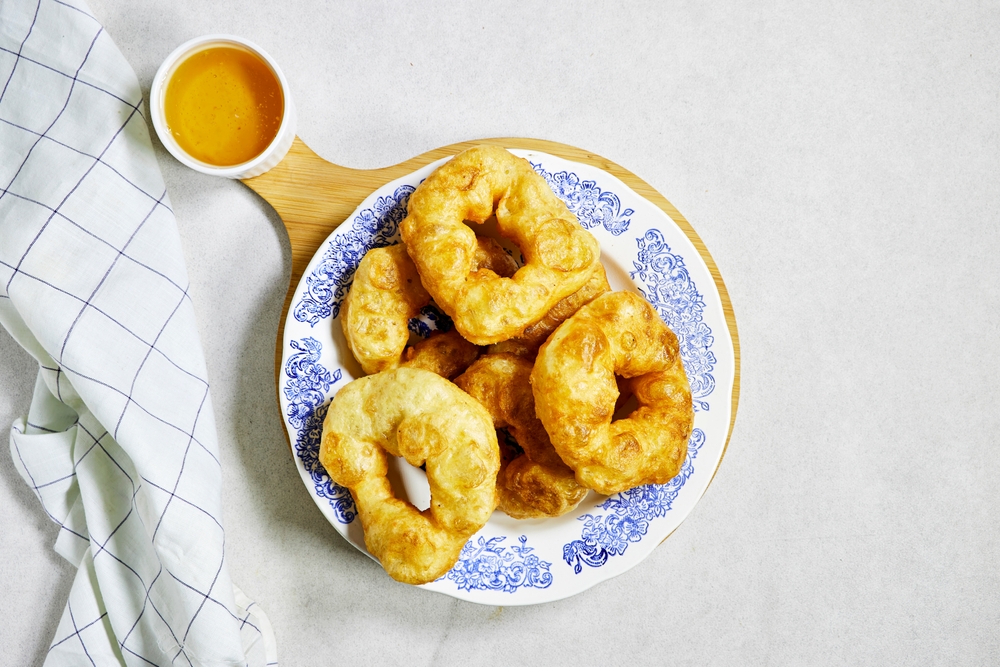Sfenj: Morocco’s Answer to the Perfect Doughnut
As dawn breaks over Moroccan towns, the air fills with the sweet scent of freshly fried Sfenj. These golden, crispy doughnuts, slightly chewy inside and glistening on the outside, have been a breakfast staple and teatime treat for generations, offering a taste of Moroccan tradition with every bite.
Golden Rings of History: Sfenj’s Origins
Sfenj finds its roots in the rich tapestry of North African cuisine. While its exact origins remain a topic of debate, it’s an undeniable fact that Sfenj has secured its place in the heart of Moroccan culture, celebrated in homes and street corners alike.
Crafting Sfenj: Ingredients & Quantities
- 500g all-purpose flour
- 1 tsp salt
- 1 tsp sugar
- 1 sachet instant yeast (about 7g)
- Approximately 300ml warm water (adjust as needed)
- Oil for deep frying
- Powdered sugar or honey for serving (optional)
Step-by-Step: Frying the Perfect Sfenj
- Preparing the Dough: In a large mixing bowl, combine flour, salt, sugar, and yeast. Gradually add warm water, mixing until a sticky dough forms. Knead the dough until smooth and elastic, approximately 10 minutes.
- Cover the dough with a damp cloth and let it rise in a warm place for about 1-2 hours, or until it has doubled in size.
- Once risen, divide the dough into golf ball-sized portions. Using your fingers, make a hole in the center of each ball to form a doughnut shape.
- Heat oil in a deep frying pan over medium heat. Once hot, carefully drop the shaped dough into the oil. Fry the Sfenj until they’re golden brown on both sides, turning occasionally for even coloring.
- Remove the Sfenj with a slotted spoon, allowing any excess oil to drip off, and place them on paper towels.
- While still warm, you can sprinkle Sfenj with powdered sugar or drizzle with honey, if desired. Enjoy with a cup of Moroccan mint tea for the authentic experience.
Tip: For a slightly different texture and flavor, some chefs use a combination of wheat and semolina flour in their Sfenj recipes.

More Than Just a Doughnut: Sfenj in Moroccan Culture
Sfenj is more than just a sweet treat; it’s a symbol of Moroccan hospitality. Whether served during special occasions, religious festivals, or as a daily breakfast item, Sfenj connects Moroccans to their culinary roots, evoking memories of family gatherings and shared moments.
Cracking the Sfenj Code: Common FAQs
1. How is Sfenj different from other doughnuts?
Sfenj stands out due to its slightly chewy texture, golden crispy exterior, and its simplicity. Unlike many doughnuts, Sfenj is typically not overly sweet, allowing for versatility in toppings.
2. Can Sfenj be filled?
Traditionally, Sfenj is not filled. However, modern twists to the recipe might include fillings or varied toppings to cater to different palates.
3. How long does Sfenj stay fresh?
Sfenj is best consumed fresh, shortly after frying. If you must store them, keep them in an airtight container, although they may lose their signature crispiness over time.
4. Are there regional variations of Sfenj in Morocco?
While the core recipe remains consistent, regional variations can be found in terms of toppings, serving accompaniments, and slight alterations in the dough’s composition.
5. What’s the best drink to pair with Sfenj?
A freshly brewed pot of Moroccan mint tea complements Sfenj beautifully, enhancing the overall culinary experience.
For more treats like Sfenj, explore the vibrant landscape of African street food treasures.
